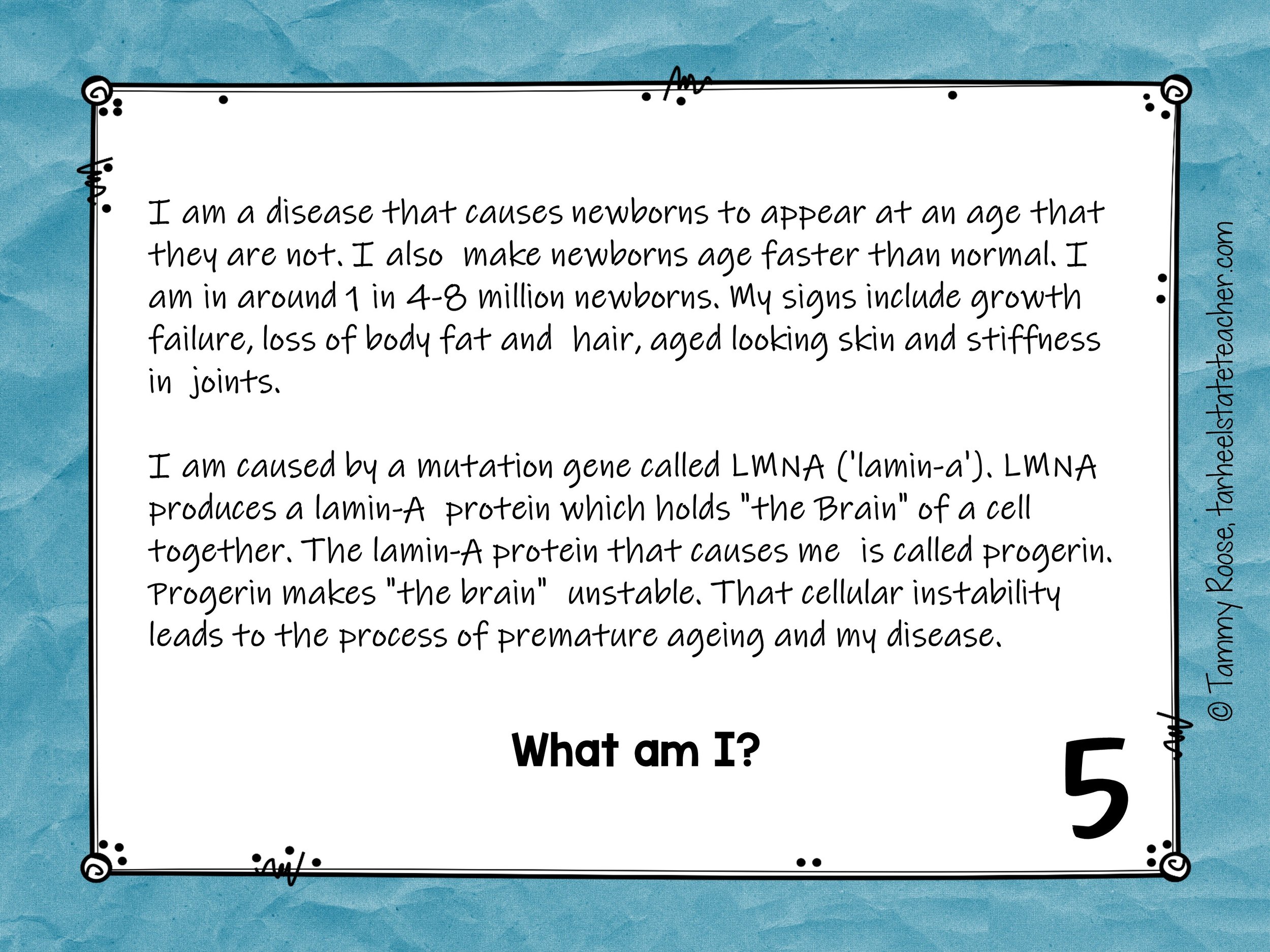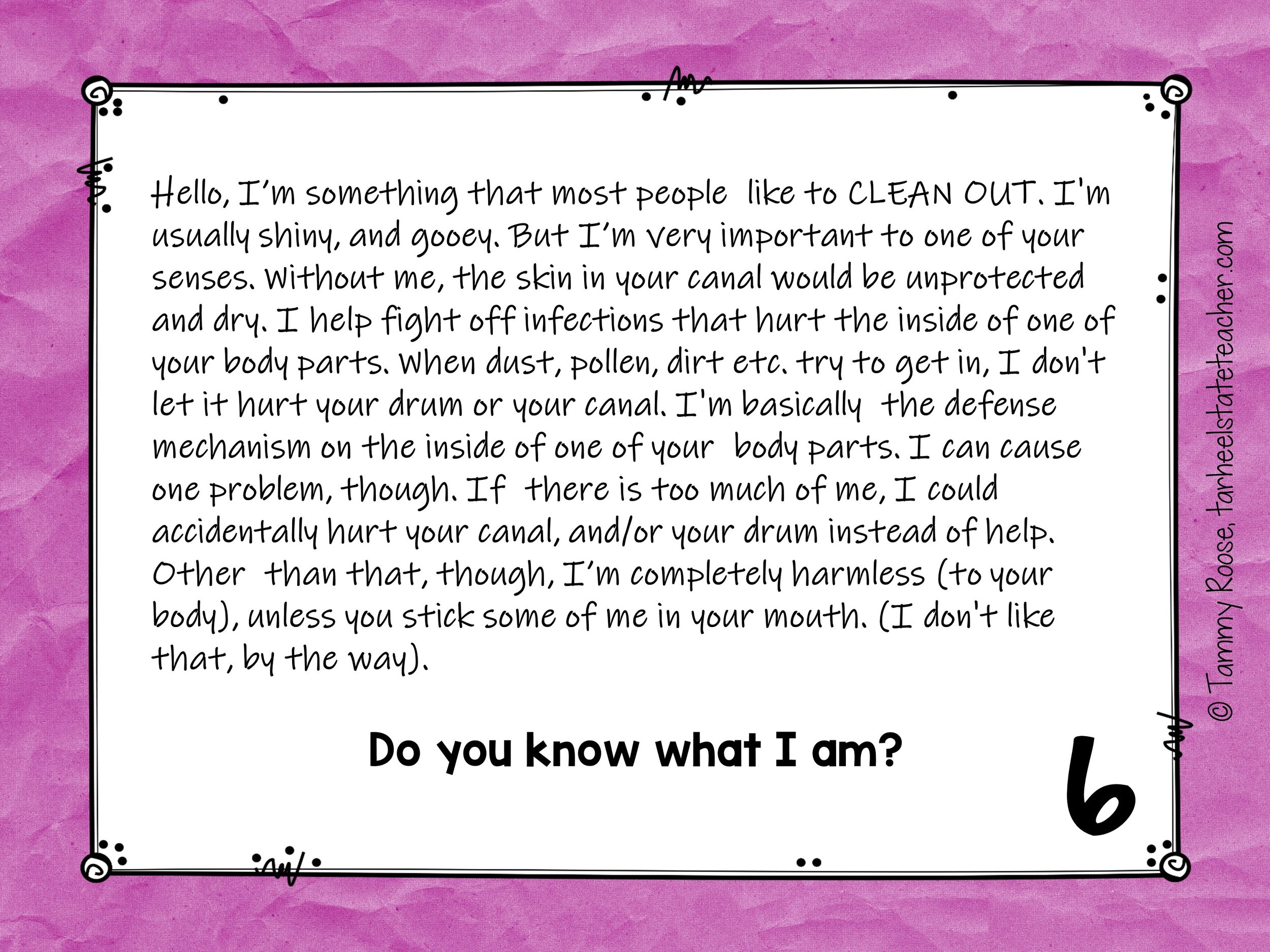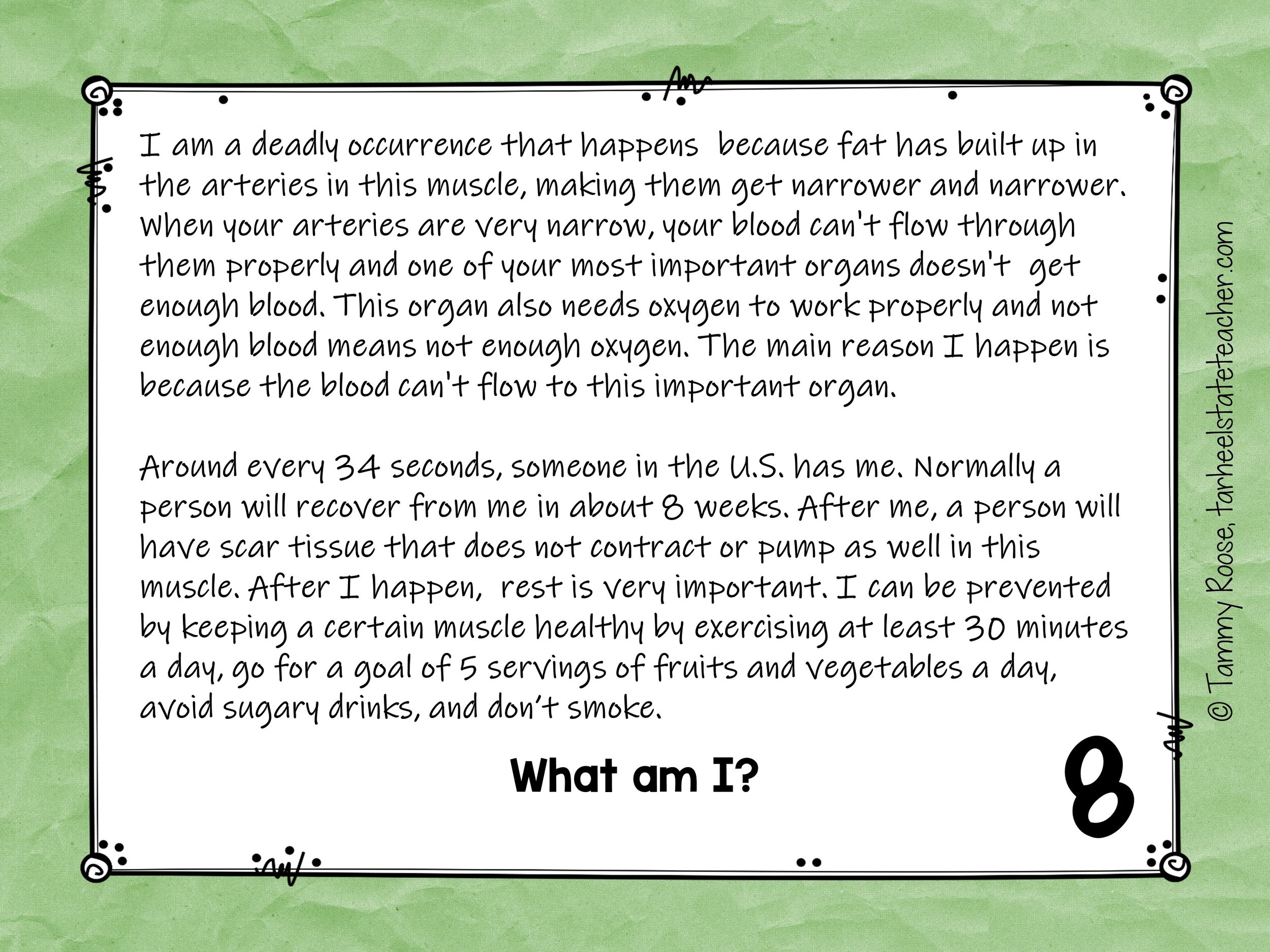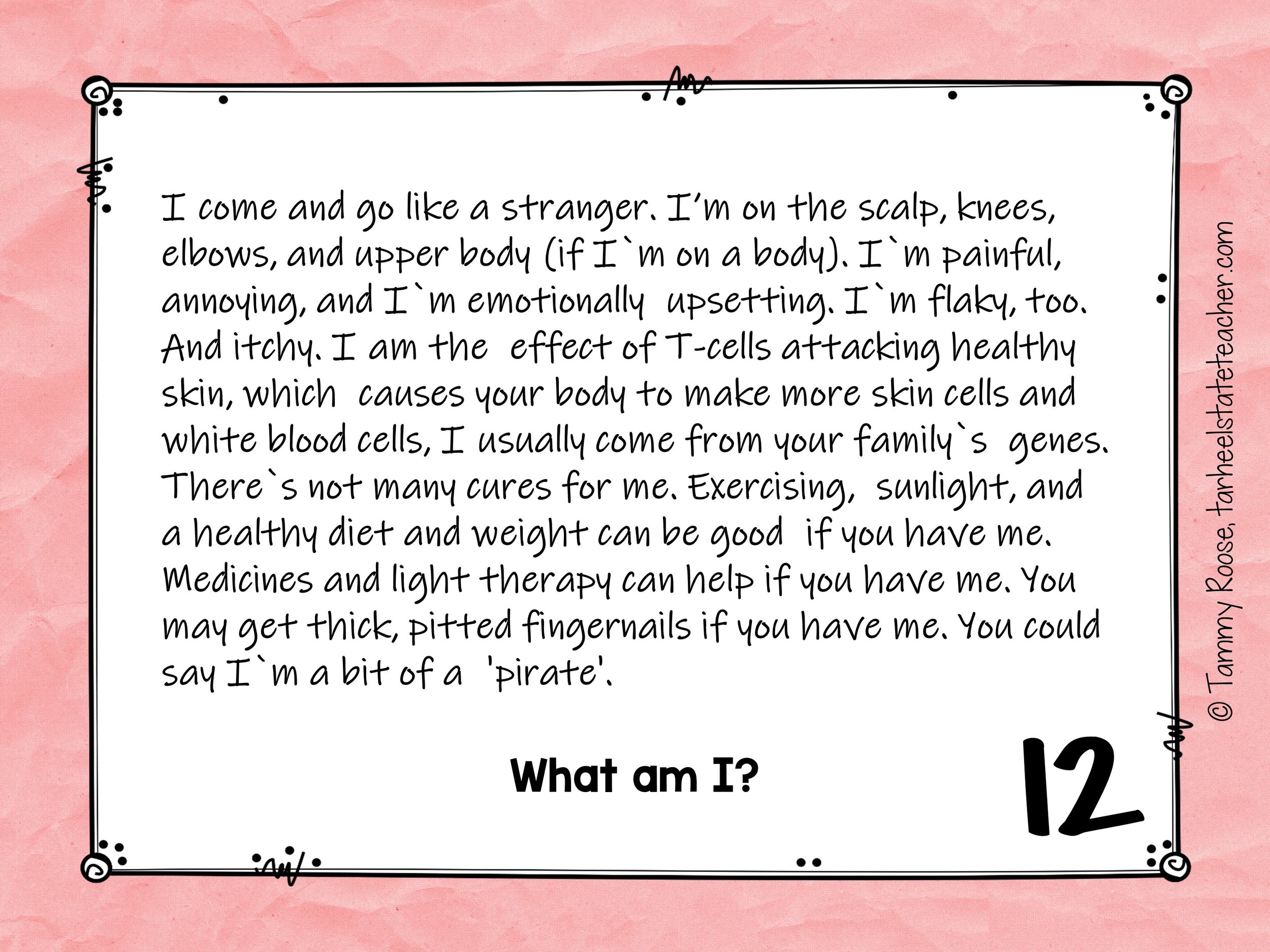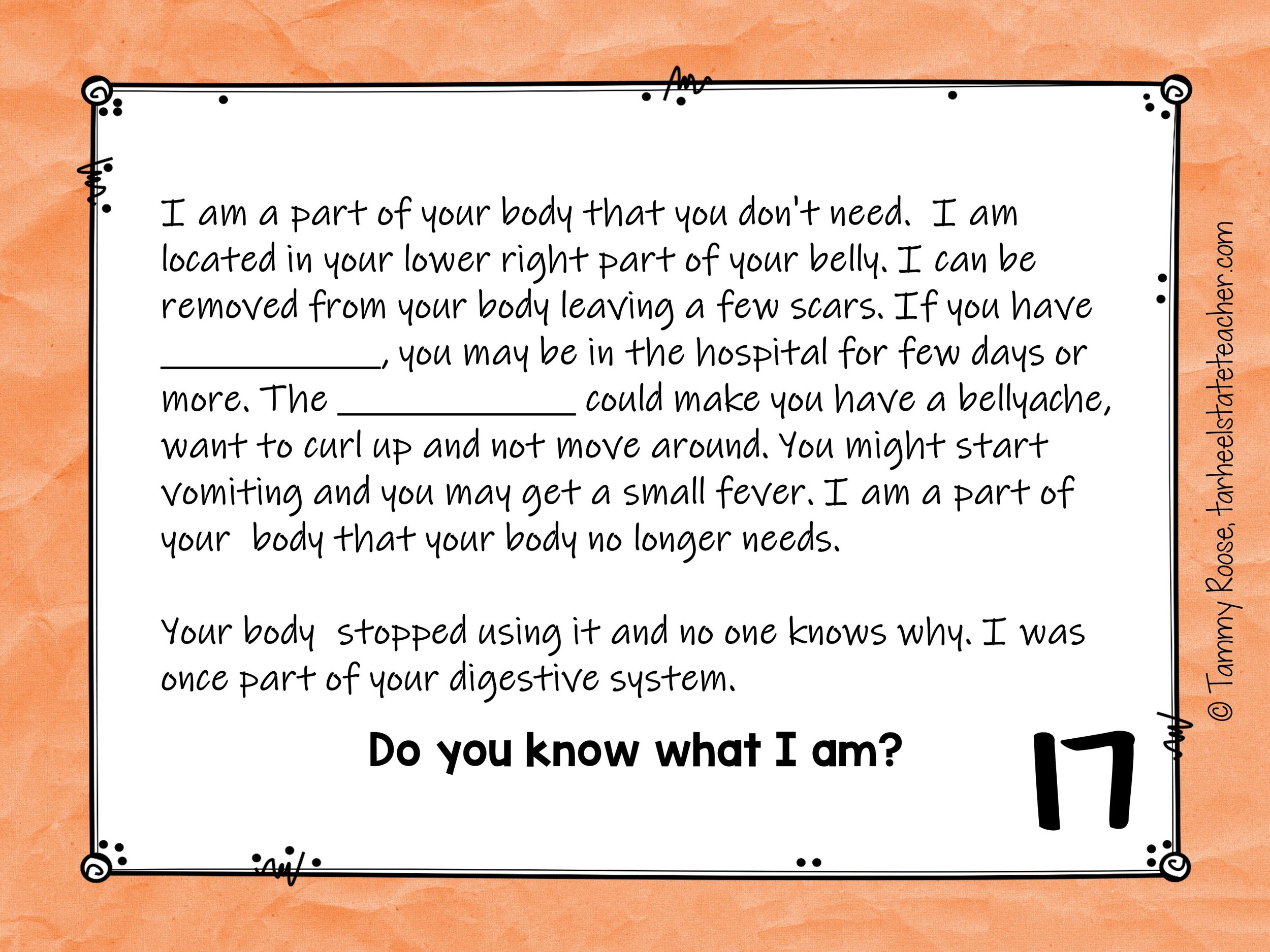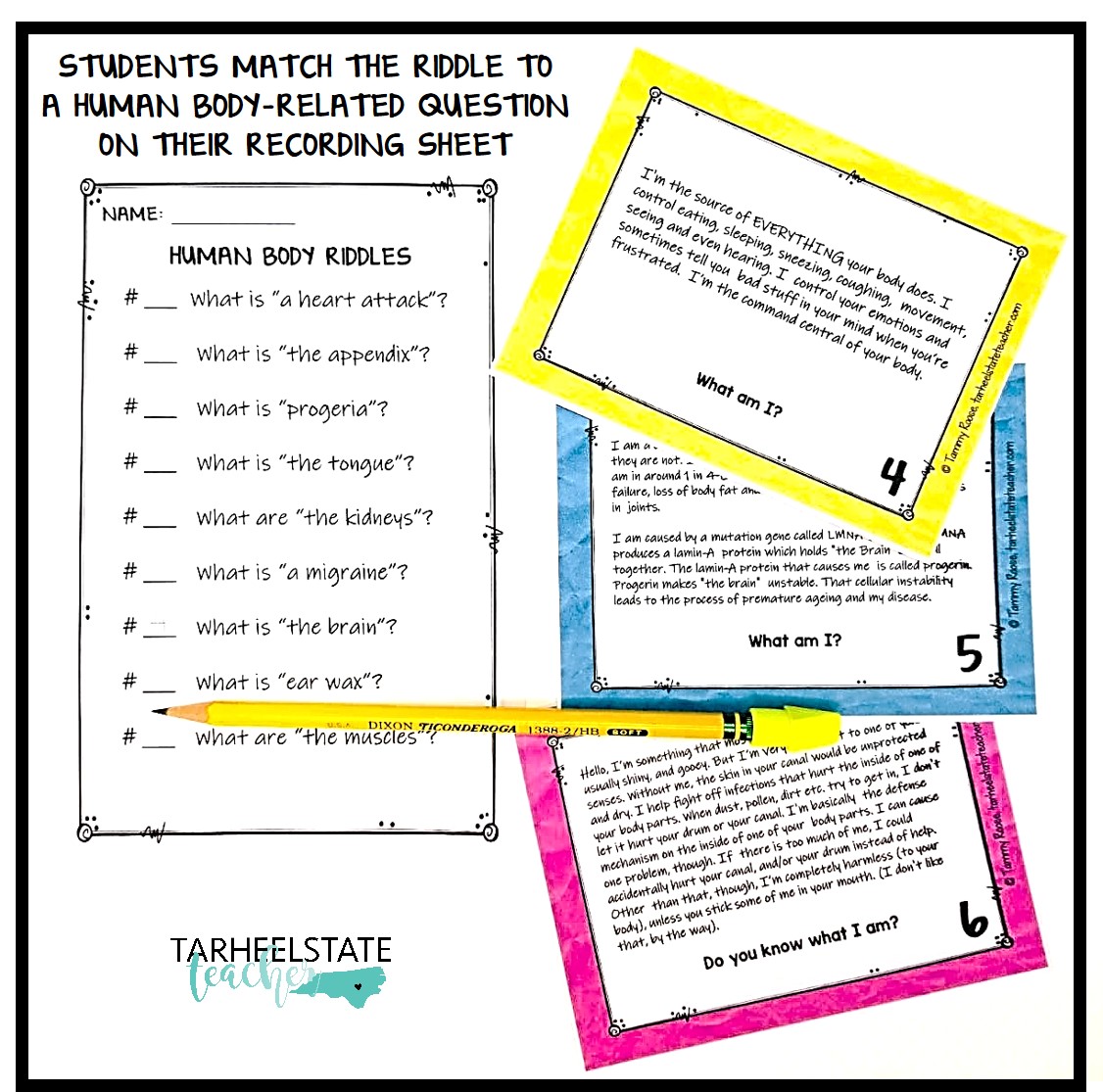Inspiring Wonder in the Classroom with "Writing Riddles"
Are you looking for a writing project or writing research idea that will inspire WONDER and CURIOSITY in your 4th grade or 5th grade students? A writing project so good that it will motivate them to seek out answers on a content-area writing topic and result in a FUN writing celebration that educates ALL of your students on those topics? Well, I’m sharing a writing project idea that allows you to do all that…and the best part of all, it’s a MINI-RESEARCH and WRITING project that your students can complete in less than a week!
Common Core Writing Standards for 4th Grade and 5th Grade requires that students perform mini-research projects throughout the year where they produce a writing product in a single sitting or a few days. The standards I’m referring to are:
W4.7 Conduct short research projects that build knowledge through investigation of different aspects of a topic.
W5.7 Conduct short research projects that use several sources to build knowledge through investigation of different aspects of a topic.
W4.10 and W5.10 Write routinely over extended time frames (time for research, reflection, and revision) and shorter time frames (a single sitting or a day or two) for a range of discipline-specific tasks, purposes, and audiences.
When I first read these writing standards, I struggled with the idea that I could have my students do something “mini" while also "meaningful." I tend to dig deep into our writing units, turning them into projects that last a half a quarter or more. I grappled with how students could write smaller as we guide them to become better writers.
And then I came up with the idea of “writing riddles” during our Human Body Systems unit.
Having students complete a research project on a disease of interest was one of the intentions of my plans with our Human Body Systems unit. I hoped to encourage healthy living as an outgrowth of our human body objectives. However, I taught our Human Body Systems unit during 4th quarter and we were running out of time!
I felt a little lazy making this decision, but I decided not to launch a huge, in-depth research project. We really just did not have the time to see a larger project through, in addition to the basic Human Body Systems research my students were completing. Fortunately, I thought of “WRITING RIDDLES” as a solution.
What's a Writing Riddle?
In “Writing Riddles,” students write 1-2 paragraphs in a riddle-like format. (For once, I actually encouraged my students to write with intentional vagueness!)
“Writing Riddles” was an AMAZING idea for my unit because of its ability to meet many common core objectives with a small assignment, it capitalized on my students' LOVE of celebrating and sharing their writing, and our share-fest was done in a task-card-like structure, which my students LOVE.
Are you ready to find out how to set up your own “Writing Riddles” mini-research project? “Writing Riddles for Mini-Research” will be ALL-the-RAGE for your students! :) I promise! <3
Launching a “writing riddles” mini-research project
So, how did I launch this writing riddles idea and get my students started? I wanted to use students’ curiosity and wonder about the human body to my advantage. I created a simple "Wonder" sheet and gave students four categories for generating topics—organs and other body parts, habits, diseases, and curiosities. (You can click to catch it for free from my google docs!)
After brainstorming some ideas, students circled their top two choices (or wrote them in the bottom block on the worksheet). I then went through each students’ sheet and approved their topics to make sure everyone studied something different.
Next, students spent one day researching online and one day typing their “writing riddle” paragraphs in google docs. Once the paragraphs were drafted in google docs, I showed students how to copy and paste their paragraph into a shared google doc set to landscape (easier prep for me!). I then downloaded the document, making sure that each students’ writing riddle was on a page by itself.
I added some cute backgrounds to make the paragraphs a little more jazzy—you can search TPT for FREE digital backgrounds, but in a rush, you could just pick a cute font, print on colored paper, and move on! Before I printed the sheets, I also included a number on each slide so that the paragraphs were numbered (you could also do this by just writing a number on each page).
Here's a sample of my favorite Writing Riddle paragraphs:
How FUN are students’ writing riddles?!? And can you tell that they did their research and learned a lot in a short amount of time?
Do you know what the answers are? CHECK YOUR WORK :)
2) What are "the kidneys"?
4) What is "the brain"?
5) What is “progeria”?
6) What is "ear wax"?
8) What is a "heart attack"?
12) What is "eczema"?
15) What is a "muscle cramp"?
17) What is "the appendix"?
Sharing our Writing Riddles Mini-Research
After printing all of the slides, I set up an around-the-room, task-card like reading/writing celebration. Students received a recording sheet with all of the questions listed.
As students moved around the room reading each riddle, they decided which question the riddle paragraph answered. For example, if I read #4 and knew it was describing the brain, I would write #4 beside of the question "What is a 'the brain’?"
Why I LOVE the Writing Riddles Project
Okay, I think you can tell that I thoroughly enjoyed this writing project, but let me tell you MORE about why!
I was truly perplexed by the idea of "short research" called for by the Common Core Standards. I mean, I understand that “short writing” can be done and that what we often do in science or social studies can be considered "short research."
However, I also interpret short research to mean short-term research projects that still culminate in students creating some type of product-not just responding to nonfiction-based questions. I felt that “short research” should still be purposeful and have a sharing component.
I wanted something meaningful and worthwhile. In our "Writing Riddles" project, students got all of that and more. In total, it took students 20 minutes to understand the assignment and generate questions, about one day to research, one day to type, and two class periods to read their classmates’ riddle paragraphs.
“Writing Riddles” are a great way for students to get to research something they are interested in, to write small, to write for a clear and specific purpose, and to have some fun! Engagement was high during this assignment!
NEXT STEPS FOR “WRITING RIDDLES”
Finding more opportunities to implement “Writing Riddles” mini-Writing projects throughout the curriculum will surely help students improve their ability to synthesize researched information and turn it into interesting pieces of writing! I envision a classroom plan where writing riddle mini-research projects are woven throughout the year in science and social studies. You could even use this strategy for book club books and chapter book read alouds as a way for students to develop their own quizzes and study guides!
Anyone else SUPER EXCITED about the possibilities of this little idea for capitalizing on your students WONDER and CURIOSITIES? What ideas/topics can you think of for implementing writing riddles for mini-research? What fun topics would your students enjoy writing about in a riddle sort of way?!?
If you are looking for more ways to inspire your upper elementary students’ curiosity and wonder, you’ll want to check out these other great ideas!
"Writing Riddles" for Mini-Research in Science | Tarheelstate Teacher
3 Ways to Strengthen Student Questioning During Reading | Think Grow Giggle
Modifying Math Word Problems to Encourage Curiosity | Mix and Math
Wonder Walls & STEM Challenges | Kerry Tracy
Word Wonders: Collecting Multi-syllabic Words | Reading by Heart
Using Visible Thinking to Read With Wonder | Wild Child's Mossy Oak Musings
Stimulating Curiosity through Questioning | The Owl Teacher
Inspiring Curiosity through Technology | Love Learning
Mathematicians Inspire Wonder & Curiosity | Tried and True Teaching Tools
Taking KWL Charts Up a Notch | Elementary Inquiry
Curiosity in the Classroom: Five Steps to Engagement and Creativity | Mikey D Teach






